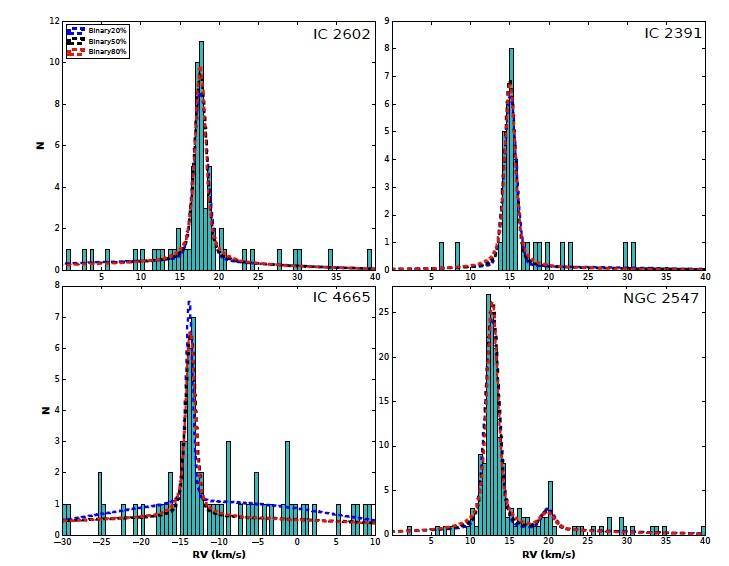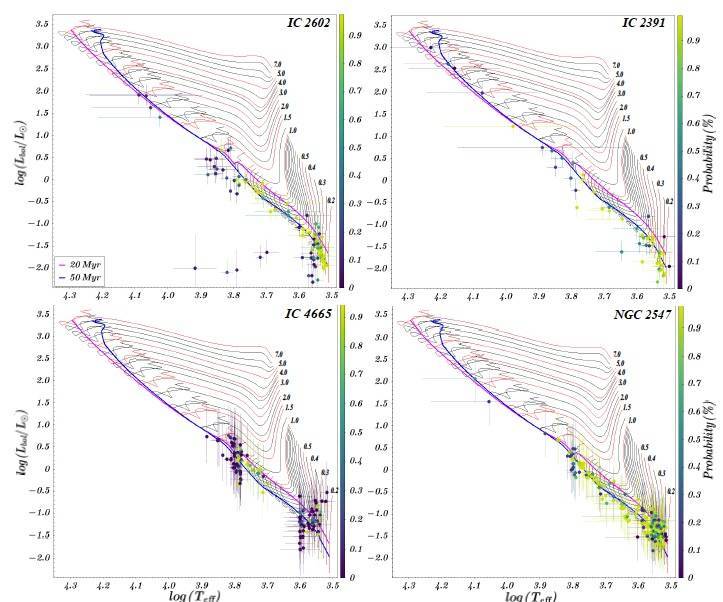A Dynamical study of young open clusters
with the Gaia-ESO Survey
Stars do not form in isolation but in clusters composed of a few tens to several thousands of objects, which in most cases disperse in the Galactic field within 10-100 Myr. The physical mechanisms driving the clusters dissolution are not well understood and very debated.
In particular, two main scenarios have been proposed. According to the “residual gas expulsion model”, the cluster dispersion is driven by the feedback of high mass stars, which disperses the interstellar gas, that did not form stars. Other authors suggest that clusters evolution is driven by two-body interaction and the feedback is not relevant. An important parameter to distinguish between the two models is the virial ratio, which describes the dynamical status of the cluster, and -- under some assumptions -- can be derived by the velocity dispersion, the total cluster mass and its radius.
Luca Bravi, a PhD student of the University of Florence, and a group of researchers of the Arcetri Observatory (G. Sacco, S. Randich, E. Franciosini, E. Pancino, V. Roccatagliata, L. Magrini and L. Morbidelli) used the data of the Gaia-ESO Survey to determine for the first time the virial ratio of four open clusters in the critical age range between 20 and 50 Myr. As shown in Fig. 1, the excellent quality of the radial velocities allowed them to measure dispersions as small as 0.5 km/s, while the stellar parameters (see Fig. 2) have been used to derive the masses of the individual stars.
All the clusters studied are supervirial. This results is in agreement with the “residual gas expulsion scenario” which suggests that the clusters are left in this state after the gas is swept out from the massive stars. The results of this work have been published in a paper on A&A (Bravi et al. , 2018).

Fig. 1: Radial velocity distribution of the four open clusters studied by Bravi et al. (2018). The dashed lines represent the models used to fit the data.

Fig. 2: HR diagrams of the four open clusters studied by Bravi et al. (2018). The stars are color-coded according to the probability to belong to clusters. Lines represent tracks and isochrones from the evolutionary models of Tognelli et al. (2011).



